My tendency, as you’ve seen from my past blog posts, is to think big picture. I learn towards theology, ideas, trends, analysis of verses,patterns of people marring God’s Creation, and patterns of people regenerating God’s Creation through ingenuity and commitment and faith.
In this post, I go in a different direction. I share some moments in my life in the month of April that relate in some way to God’s earth.
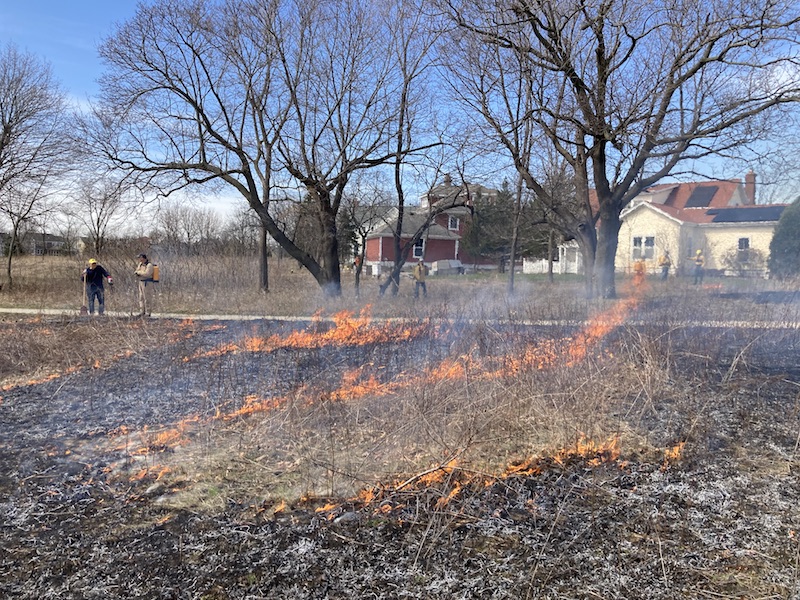
April 10 – I volunteer along with other residents here in the Prairie Crossing conservation community to burn several sections of the prairies and other habitats of our community’s common areas. Our burn leader – Jim O’Connor – takes extreme care in the planning of the burns so that homes are never in danger. Jim also keeps track of when areas are burnt. It’s not good to burn at the same time of the year every time. Prescribed burns are essential to keep prairies healthy.
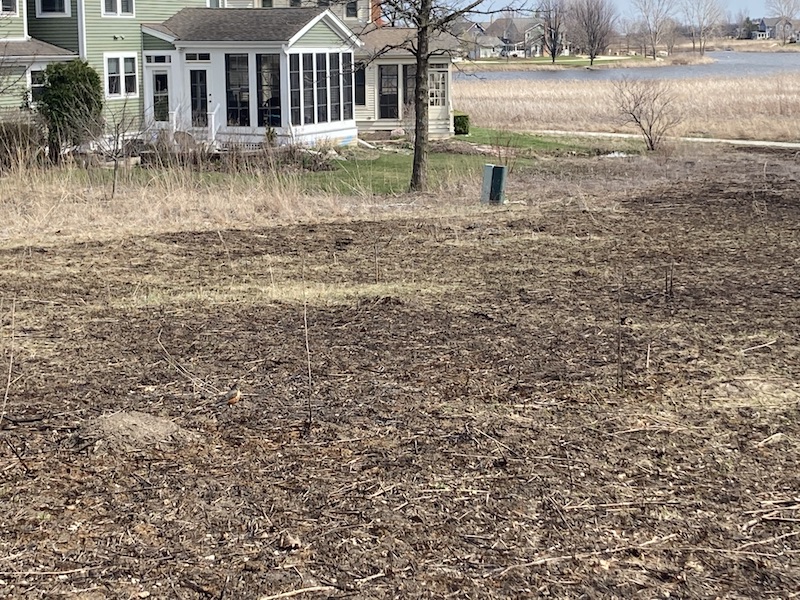
April 16 – This is the same area six days after the burns on April 10. Look carefully in the bottom left corner of the image. Can you see the mound that has a different texture than everything around it? And can you see the robin just to the right of the mound? The mound is that of a colony of prairie ants (likely Formica montana). With the weather warming, the ants had begun to appear on the surface. And that had drawn the robin which had been scarfing them down like a famished guest consuming a tray of hors d’oeuvres. Prairie ants play an important role in prairie ecology and provided a useful, high-protein, high-fiber diet supplement for the robin early this cold spring. I wonder what King Solomon would make of this.
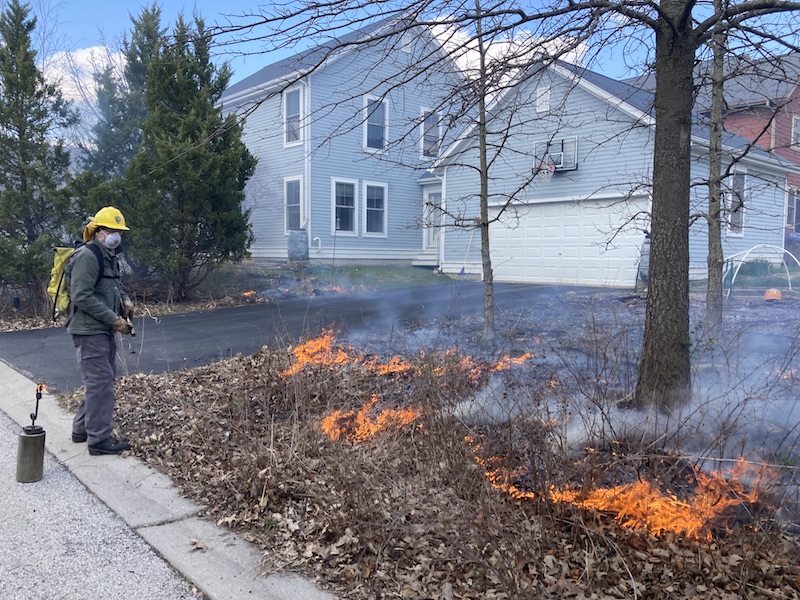
April 19 – Many residents in Prairie Crossing have native habitats on their own properties as well. Here Jim O’Connor (yes, he is everywhere) and Bill Pogson (not in the picture) are helping me burn the natural habitats of our yard. Further down the alley we have a small open prairie. Here we have three oaks whose leaves burn nicely, contributing the fire ecology of the habitat. Prairie Crossing HOA regulations require us to have at least 3 adults carry out any burn and to also make sure that the weather is suitable for a burn that day. Burning together with neighbors brings us together. After the burn was completed (and perhaps inspired by the beer), Jim expertly recited portions of a Robert Burns’ poem.
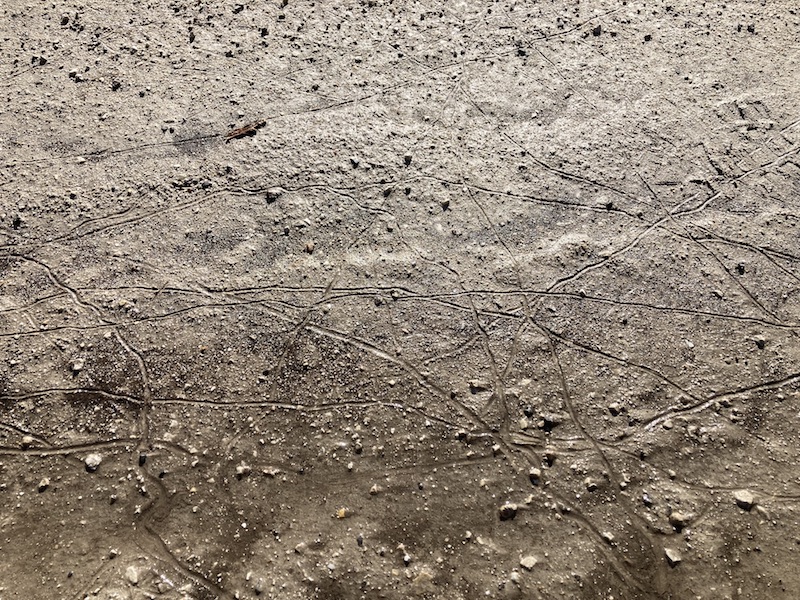
April 21 – Any ideas what this is? A lunar landscape perhaps? It’s been a wet month. Rain the previous day turned some eroded soil along the edge of Harris Road near our non-profit organization’s office into mud. These are worm trails visible early on a weekday morning. The ephemeral trails were ever so faint traces of creatures whose lives are usually invisible to us.

April 21 – Another burn in a Prairie Crossing common area. My friend and neighbor Bill Pogson uses a drip torch to spread the flame. Earlier we had burned to the right of the image so the flames you see that are being pushed by the wind will only go a short distance and then run out of fuel. I had more work to do at the office that Friday afternoon, but I felt I needed to help out as good burn weather can often be rare. Glad I did. The needs of people and nature don’t always fit in nicely with our plans for a day.

April 25 – It’s a weekday night, and Mayumi and I need to figure out what to make for dinner in a hurry. We had leftover basmatic rice I had made over the weekend, so Mayumi created a quick stir-fried rice dish with organic peas, onions, carrots, and pasture-raised eggs.
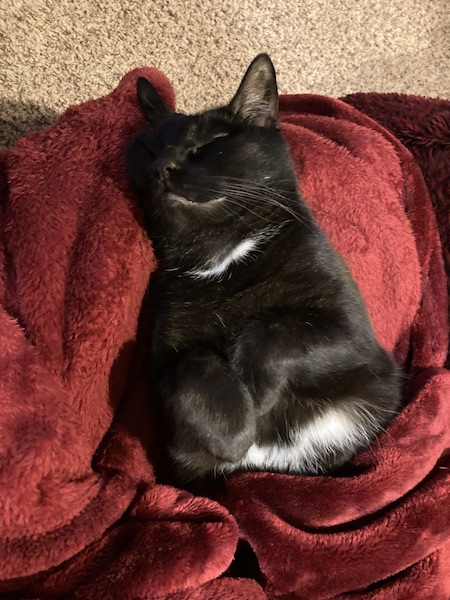
April 25 – Gus, one of our two cats, enjoying a nap in covers we’ve pulled up around him. I believe our love of our pets and how our homes feel much better with plants in them remind us of something profound we see in Genesis – we are meant to be in a state of shalom with the rest of life.
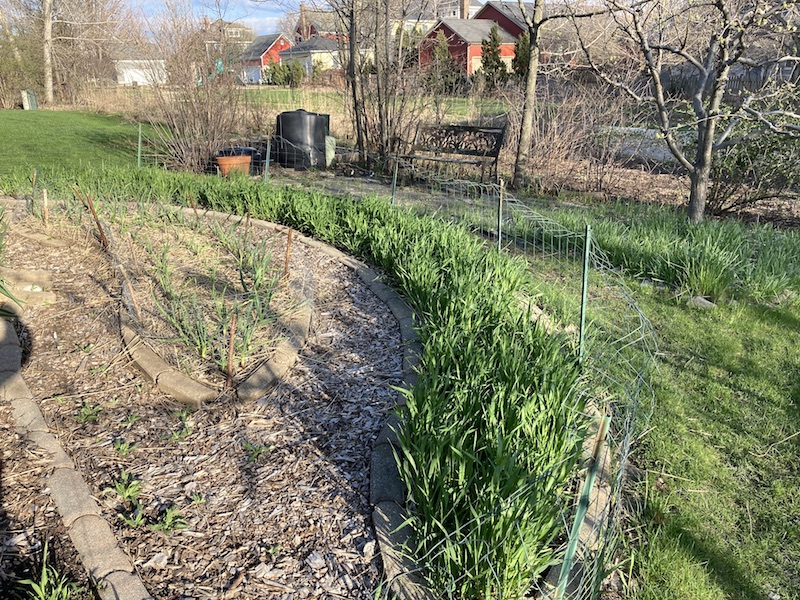
April 26 – Our small garden at the south end of our home. You can see the compost bins in the background. To the right of the bin is a choke cherry and a shagbark hickory, both native woody plants. And at the right edge of the image is an Asian pear tree. The abundance of vegetation you see in the garden itself is winter rye, a cover crop that my wife Mayumi planted last fall to build the soil. The winter rye stayed green all winter, and with all of the rain, it is now growing quickly, which means it is pumping dissolved sugars (liquid carbon) into the soil which feeds the microbes and fungi there. This is our first time using cover crops in these beds. We keep trying to learn.
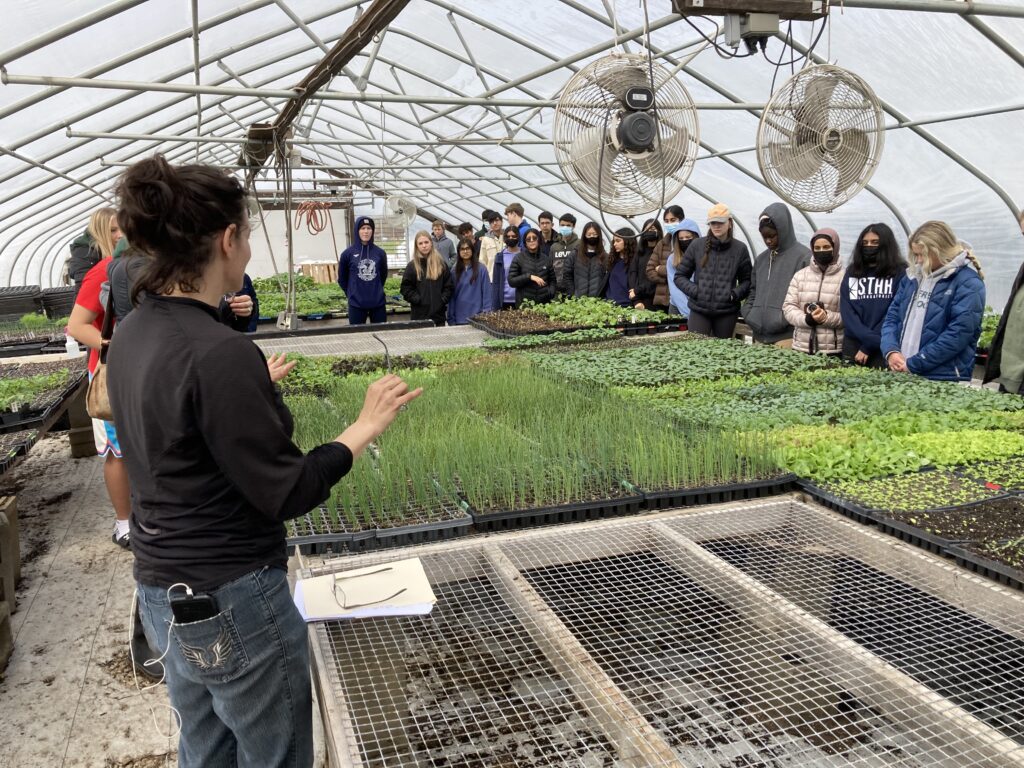
April 27 – It’s not exactly in my job description, but on this Wednesday I led a tour of our farm and Prairie Crossing for ~40 students of AP Human Geography classes from a local high school. Here my colleague Meg Runyan explains how she gets 8,000+ plants germinating and growing in our greenhouse for our annual organic plant sale. Earlier I had shared why it makes such a big difference to human health and nature how food is farmed. One of the teachers said at the end of the tour, almost as an aside, that just reading about sustainabilty has little impact and meaning. Youth need to experience what it actiually looks like.
I also gave a sermon to the North Suburban Mennonite Church and Christ Community Mennonite Church on the Sunday after Earth Day. In preparation for the sermon I reviewed my notes from a book I had found inspiring some years agao – The Forgotten Ways: Reactivating the Missional Church by Alan Hirsch. A quote I found that I couldn’t squeeze into the sermon that I still find compelling and want to share is:
“To say this more explicitly, there is no such thing as sacred and secular in biblical worldview. It can conceive of no part of the world that does not come under the claim of Yahweh’s lordship. All of life belongs to God, and true holiness means bringing all the spheres of our life under God.”




